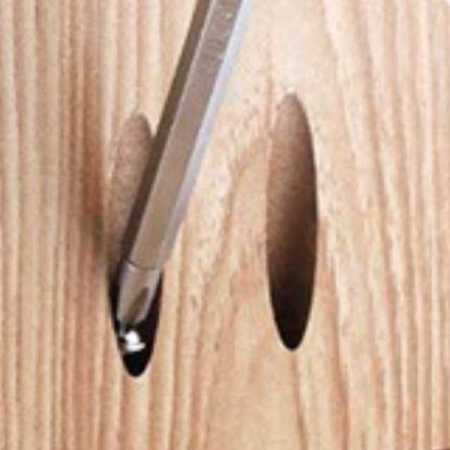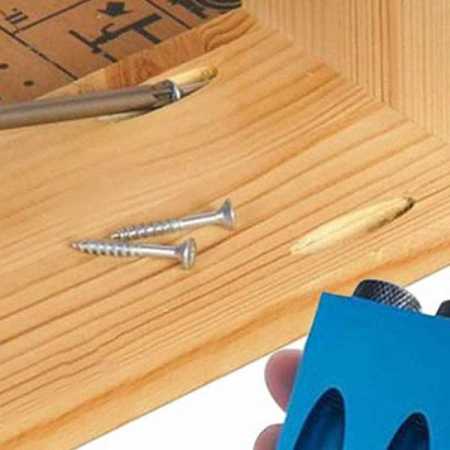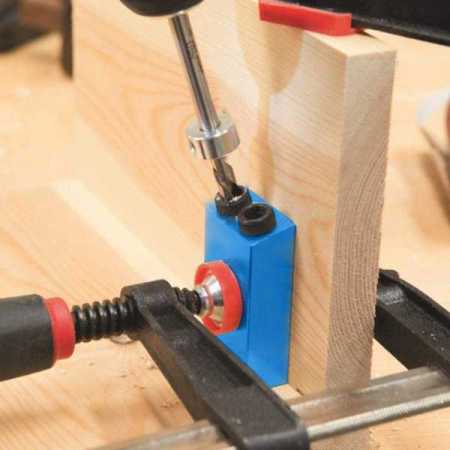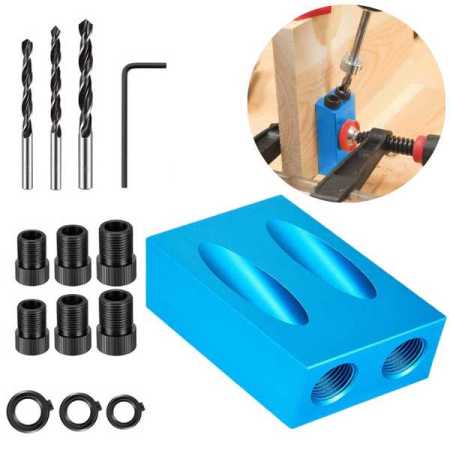Online DIY Store - Proudly Kiwi

Oblique Hole Jig for Screwing and Dowelling at 15 Degrees
Category: Drills and Screwdrivers
Brand: PTNZ
Model number: PTNZOJ-2007S
Product Description
Drilling oblique (or angled) holes in timber to screw pieces together is a common technique used in woodworking to create strong and inconspicuous joints. If you're looking to achieve this, using a jig can simplify the process and ensure consistent results. Here's a guide on how to do just that:
How to Drill Oblique Holes for Screwing Timber with a Jig:
Materials:
- Two pieces of timber
- Screws suitable for timber
- Drill and drill bits
- Pocket hole jig (like the Kreg Jig)
- Clamp
- Measuring tape or ruler
- Pencil
Steps:
- Mark the Timber: Begin by marking where you want the screws to go. Ensure you choose locations that will provide the best hold without compromising the timber's structural integrity.
- Set Up the Jig: Pocket hole jigs, like the Kreg Jig, often come with adjustable settings for different timber thicknesses. Adjust the jig to match the thickness of your timber.
- Clamp the Timber: Securely clamp the timber into the jig. Ensure it's snug, so the timber doesn't shift during drilling.
- Drill the Hole: Insert the drill bit into the guide hole of the jig, and start drilling. The angle is predetermined by the jig, allowing you to drill a perfect oblique hole.
- Repeat: If you need multiple holes, move the jig to the next marked position and repeat the process.
- Connect the Timber Pieces: Align the timber pieces as desired. Use a driver to screw them together through the oblique holes. For best results, use pocket hole screws, which are specially designed for this kind of connection.
- Finishing Touches: Once screwed together, you can use wood filler to hide the pocket holes if desired. Sand down the area for a smooth finish, and apply your choice of paint or stain.
Tips:
- Timber Thickness: Ensure your screws are of appropriate length to connect the pieces without protruding from the opposite side.
- Clamping: Always clamp your workpieces securely, both when drilling and when screwing them together, to ensure precision and safety.
- Jig Maintenance: Keep your jig clean, and occasionally inspect it for wear or damage. Replace any worn-out parts to maintain accuracy.
Benefits of Using a Jig:
- Consistency: Jigs ensure every hole is at the same angle, providing uniformity across projects.
- Speed: Once set up, drilling oblique holes with a jig is faster than freehand drilling. .
- Strength: The oblique angle allows screws to secure timber pieces more effectively than straight-in screws, especially in edge-to-edge or end-to-edge connections. .
Using a jig for drilling oblique holes in timber makes the process efficient and accurate. With the right tools and a bit of practice, you'll be creating strong, clean joints in no time!







